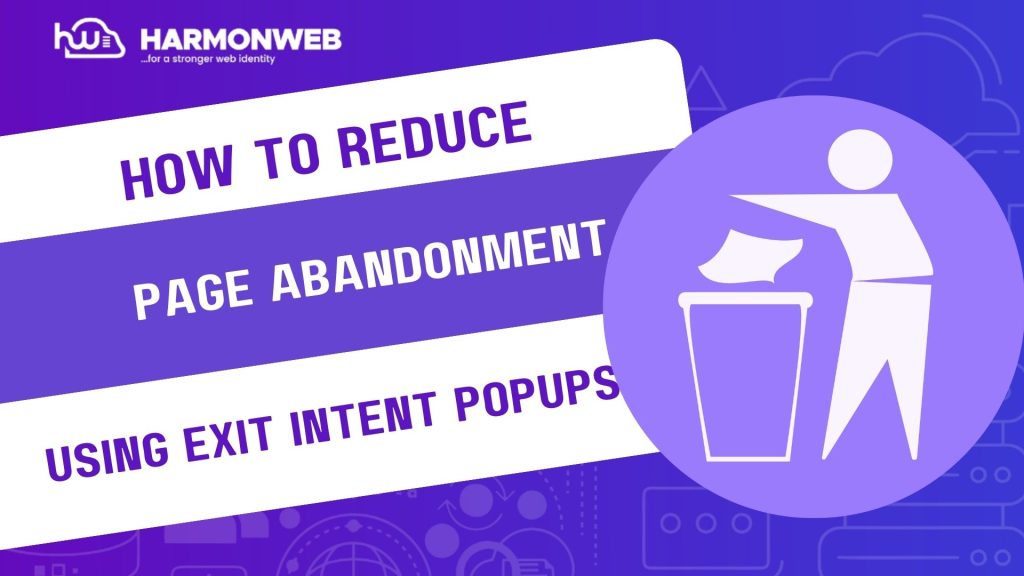Page abandonment is one of the biggest challenges website owners face—especially in eCommerce, content marketing, and lead generation. Statistics show that the average bounce rate for most websites ranges between 41% and 55%. That means nearly half of your visitors leave without engaging further. But there is good news: exit intent popups can help you capture these users before they disappear for good.
Exit intent popups are triggered when a user’s mouse movement indicates they are about to leave the page. They can be used to offer discounts, capture emails, provide reminders, or showcase a lead magnet. When implemented thoughtfully, these popups can significantly reduce page abandonment and improve conversion rates.
In this article, we will explore how exit intent popups work, what makes them effective, and best practices to ensure they enhance user experience—not ruin it.
What Are Exit Intent Popups?
Exit intent popups are smart overlays that appear only when a user is about to exit your website. They use cursor tracking to detect when a visitor moves their mouse toward the browser’s address bar, tab area, or close button. This is your last chance to capture their attention before they bounce.
Depending on your business goal, these popups can:
• Offer a time-limited discount.
• Ask for feedback.
• Provide a free download (eBook, checklist, etc.)
• Prompt email subscription.
• Offer live chat support.
Why Exit Intent Popups Work
Exit intent popups are effective because they catch users at the critical decision-making moment. Unlike intrusive popups that appear randomly, exit intent is strategic—it only engages visitors who are actively leaving.
Key Benefits:
• Increases conversions from abandoning visitors.
• Improves lead generation without harming UX.
• Reduces cart abandonment with offers or reminders.
• Provides valuable user insights through exit surveys.
Best Practices for Exit Intent Popups
1. Offer Real Value:
Your popup should give visitors a reason to stay. Use compelling offers like:
“Wait! Grab 10% off before you go.”
Or,
“Get our free guide to boost your traffic.”
2. Keep It Simple:
Do not overload the popup with text. Use:
• A short, catchy headline,
• A brief supporting message,
• A clear CTA (Call to Action) button.
3. Use Eye-Catching Design:
Design the popup to stand out from your site layout. Use contrast, readable fonts, and visuals that match your brand.
4. Target the Right Users:
Use rules to show different popups to different visitors—first-time users, returning visitors, or cart abandoners. Avoid showing it to everyone.
5. Test and Optimize:
A/B test your popup headline, offer, and design regularly. Use analytics tools to track conversions and adjust accordingly.
Examples of Exit Intent Popups
• eCommerce: “Leaving so soon? Here’s 15% off your order!”
• SaaS: “Not ready to buy? Start your free trial today.”
• Blog/Newsletter: “Don’t miss out! Join 10,000+ readers.”
Tools to Create Exit Intent Popups
Several tools make it easy to add and manage exit popups on your website:
• OptinMonster:
OptinMonster is one of the most popular and powerful exit-intent popup tools, known for its highly advanced targeting and triggering options. It allows you to display popups based on user behavior, such as scroll depth, time on site, or referral source. You also get access to A/B testing, analytics, and integrations with almost every major email marketing service. Its drag-and-drop builder makes customization simple, even for beginners, while offering enough flexibility for experienced marketers to create highly branded campaigns.
• Sumo:
Sumo offers a beginner-friendly way to create exit-intent popups, list-building forms, and welcome mats. It integrates easily with email marketing platforms like Mailchimp, AWeber, and Constant Contact, making it suitable for growing your subscriber list. The free version is fairly generous, providing basic design templates and simple customization options without requiring coding knowledge. It’s also great for small websites that want a no-fuss setup.
• Hello Bar:
Hello Bar is a versatile tool that lets you create exit-intent popups, floating bars, sliders, and page takeovers. It is extremely easy to use, with a simple setup process and clean interface. One of its strengths is the ability to target messages to specific visitor segments based on behavior, location, or referral source. Hello Bar also integrates with most major email marketing services and CRM platforms, allowing for streamlined lead capture.
• Popupsmart:
Popupsmart stands out for its lightweight, no-code approach to creating exit-intent popups that load fast and don’t affect site performance. It is cloud-based, so you can manage campaigns without installing heavy plugins. It offers advanced targeting features like device-based triggers, geolocation targeting, and traffic source segmentation, making it a great choice for tailored messaging. Its integration options cover email marketing, CRM, and even custom webhooks.
• Thrive Leads (for WordPress):
Thrive Leads is a premium WordPress plugin designed specifically for lead generation and exit-intent popups. Since it is fully integrated with WordPress, it offers customization and doesn’t require external accounts or services. Its visual editor allow you to create highly customized popups, in-content opt-in forms, and sticky ribbons. It also has powerful A/B testing features, advanced targeting, and built-in analytics, making it ideal for marketers who want control over every detail.
Note: These tools often come with built-in analytics, A/B testing, and advanced targeting features.
Conclusion
Exit intent popups can turn lost opportunities into conversions when done right. They are not just a marketing trick, but a powerful strategy to connect with visitors who are on their way out. By offering relevant value and using smart design and targeting, you can reduce bounce rates, increase engagement, and grow your business without annoying your audience.






Pingback: SEO ranking factors ? How Website Speed Affects SEO and Conversions in 2026 | HarmonWeb Blog